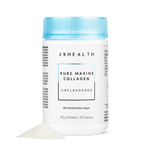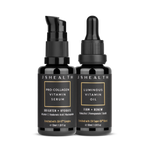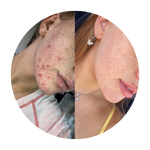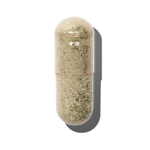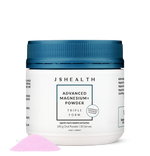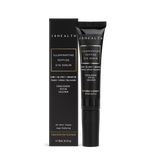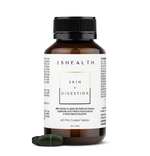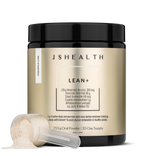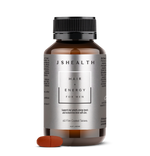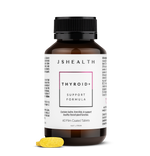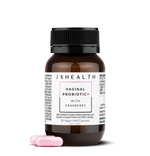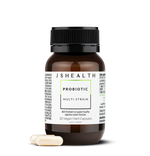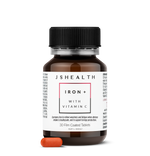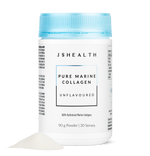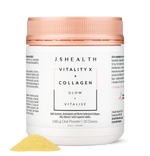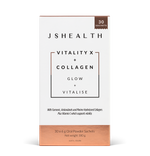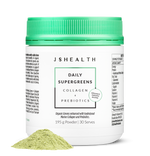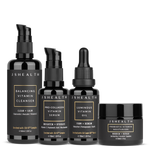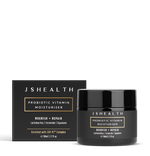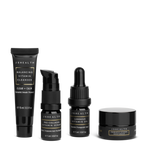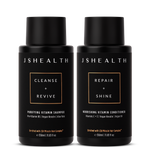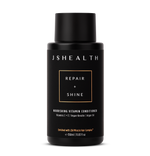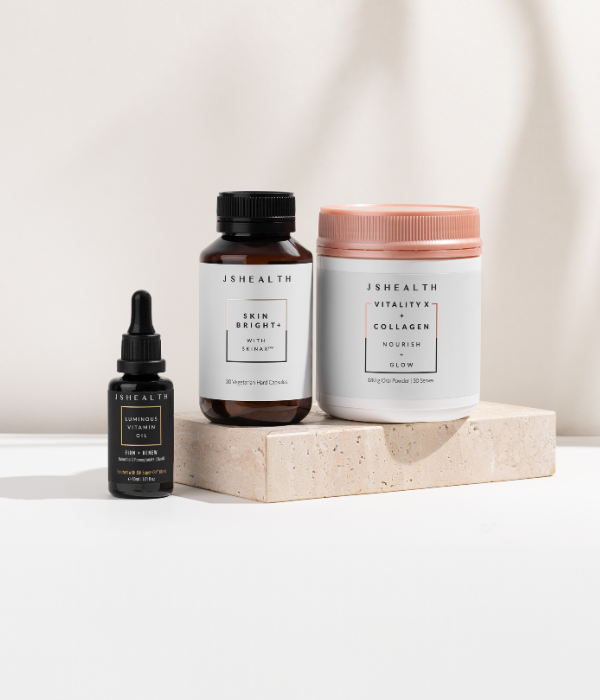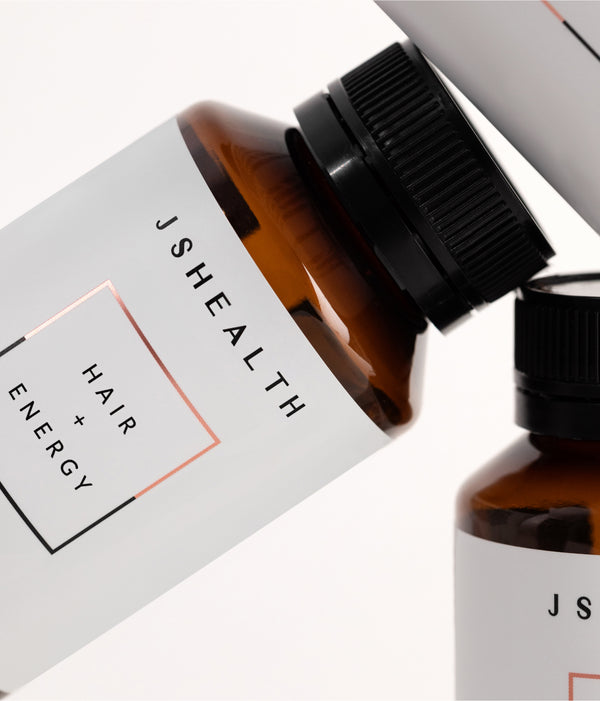What You Should Know About The Hair Cycle
Our hair growth is a complex biological process influenced by many factors such as genetics, hormones, stress and lifestyle. Understanding the hair growth cycle can help you optimise your hair health and maximise growth, strength and thickness!
Let’s break down the key phases of this cycle and what you can do to nourish your strands from the inside-out.
1. The Anagen Phase (Growth Phase)
The anagen phase is the active growth phase, lasting anywhere from two to eight years!(1)
During this stage, the hair follicles are continuously producing new hair cells, and the longer this phase lasts, the longer your hair can grow. The health of your scalp, circulation and nutrient intake play a crucial role in maximising this phase.
Our tips to support this phase:
- Incorporate a quality source of protein with each meal to fuel hair growth.
- Take hair-supporting supplements with therapeutic doses of iodine and zinc.
- Massage the scalp regularly to boost circulation.
- Keep the scalp clean and free from build-up with a deeply cleansing shampoo.
-
Reduce stress through meditation or exercise. Try the JSHealth App for free to enjoy guided movement and meditation practices for all skill levels!
2. The Catagen Phase (Transition Phase)
Lasting about 10–14 days, the short catagen phase signals the end of active growth.(1)
Hair follicles shrink, and the hair strand detaches from its blood supply. This is a natural part of the cycle, but maintaining a balanced diet with antioxidants and quality protein can help support overall follicle health.
Our tips:
- Continue consuming antioxidant-rich foods to protect follicles.
- Be gentle with your hair—avoid excessive brushing or tight hairstyles.
- Reduce exposure to harsh chemical treatments or chemical-based shampoos and conditioners.
- Stay hydrated to maintain scalp health.
-
Use our Nourishing Vitamin Conditioner as a naturally transformative weekly hair mask to strengthen strands and restore scalp health.
3. The Telogen Phase (Resting Phase)
The telogen phase lasts around three months.(1)
Hair strands remain in place but are no longer actively growing. Meanwhile, new hair is forming beneath the surface. Roughly 10–15% of your hair is in this phase at any given time! Factors like stress, nutrient deficiencies and hormonal imbalances can lead to premature entry into telogen, contributing to increased shedding.
Our tips to support this phase:
- Prioritise daily stress management techniques like yoga or deep breathing.
- Ensure adequate intake of iron, zinc and vitamin D.
- Avoid tight hairstyles that may put strain on follicles.
- Keep up with regular scalp care to maintain a healthy environment for new growth.
-
Get enough sleep to support hormonal balance.
4. The Exogen Phase (Shedding Phase)
The exogen phase is the final stage of your hair’s journey, where hair naturally falls out to make room for new growth. Losing 50–100 hairs per day is completely normal, but excessive shedding may indicate underlying issues such as stress, nutrient deficiencies or hormonal imbalances.(2)
Supporting hair health with targeted hair health formulas and topical products like our 2-Step Vitamin Haircare System, can help minimise unnecessary hair loss while supporting hair strength, health and thickness.
Our tips:
- Maintain a nourishing, balanced diet to promote new hair growth.
- Avoid aggressive styling or excessive washing, which may cause further shedding.
- Consider a vitamin-rich, clinically formulated scalp serum like our Vita-Growth Scalp Serum to strengthen hair at the root.
- Stay consistent with targeted hair supplements for long-term support.
- Be patient—shedding is a natural part of the cycle.
Supporting Healthy Hair Through All Phases
By nourishing your body with the right nutrients and maintaining a healthy lifestyle, you can support a thriving hair growth cycle through all phases.
Be wary of the following:
- Avoid smoking, as it can weaken hair and accelerate hair loss.
- Limit excessive heat styling, which can damage the hair shaft.
- Ensure you get enough essential nutrients to prevent deficiencies that may lead to hair thinning.
- Manage stress levels to avoid prematurely pushing hair into the shedding phase.
- Be cautious with harsh chemical treatments and tight hairstyles that may cause breakage or traction alopecia.
References
-
Natarelli, N., Gahoonia, N. and Sivamani, R.K. (2023) ‘Integrative and mechanistic approach to the hair growth cycle and hair loss’, Journal of Clinical Medicine, 12(3), p. 893. doi:10.3390/jcm12030893.
-
Gokce, N., Basgoz, N., Kenanoglu, S., Akalin, H., Ozkul, Y., Ergoren, M.C., Beccari, T., Bertelli, M. and Dundar, M. (2022) ‘An overview of the genetic aspects of hair loss and its connection with nutrition’, Journal of Preventive Medicine and Hygiene, 63(2 Suppl 3), pp. E228–E238. doi:10.15167/2421-4248/jpmh2022.63.2S3.2765.


